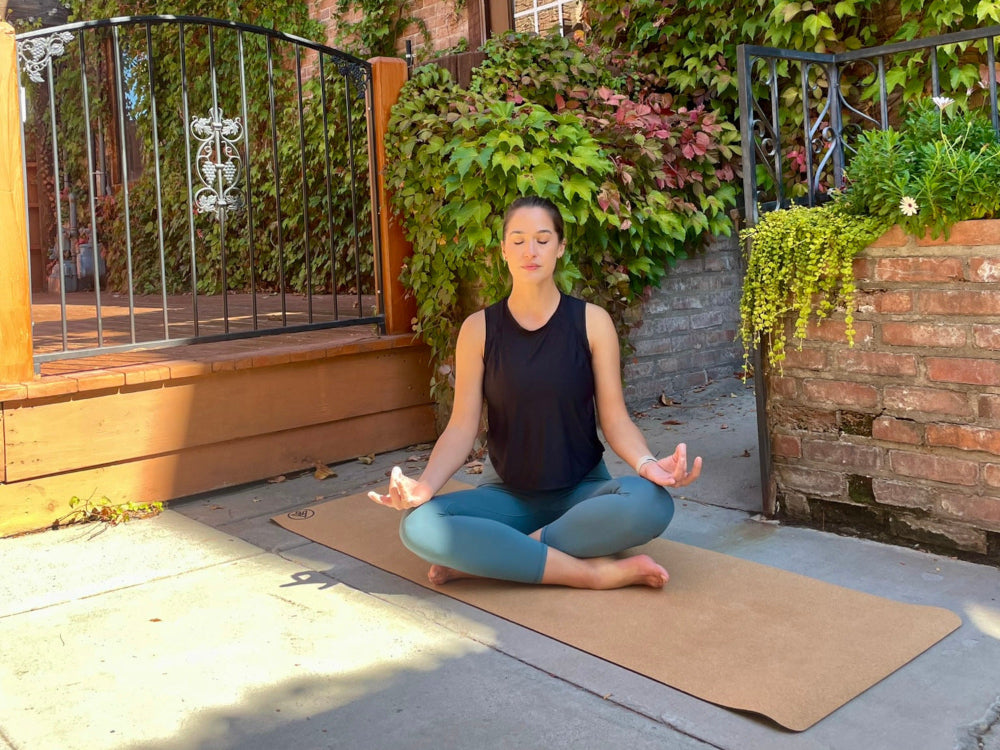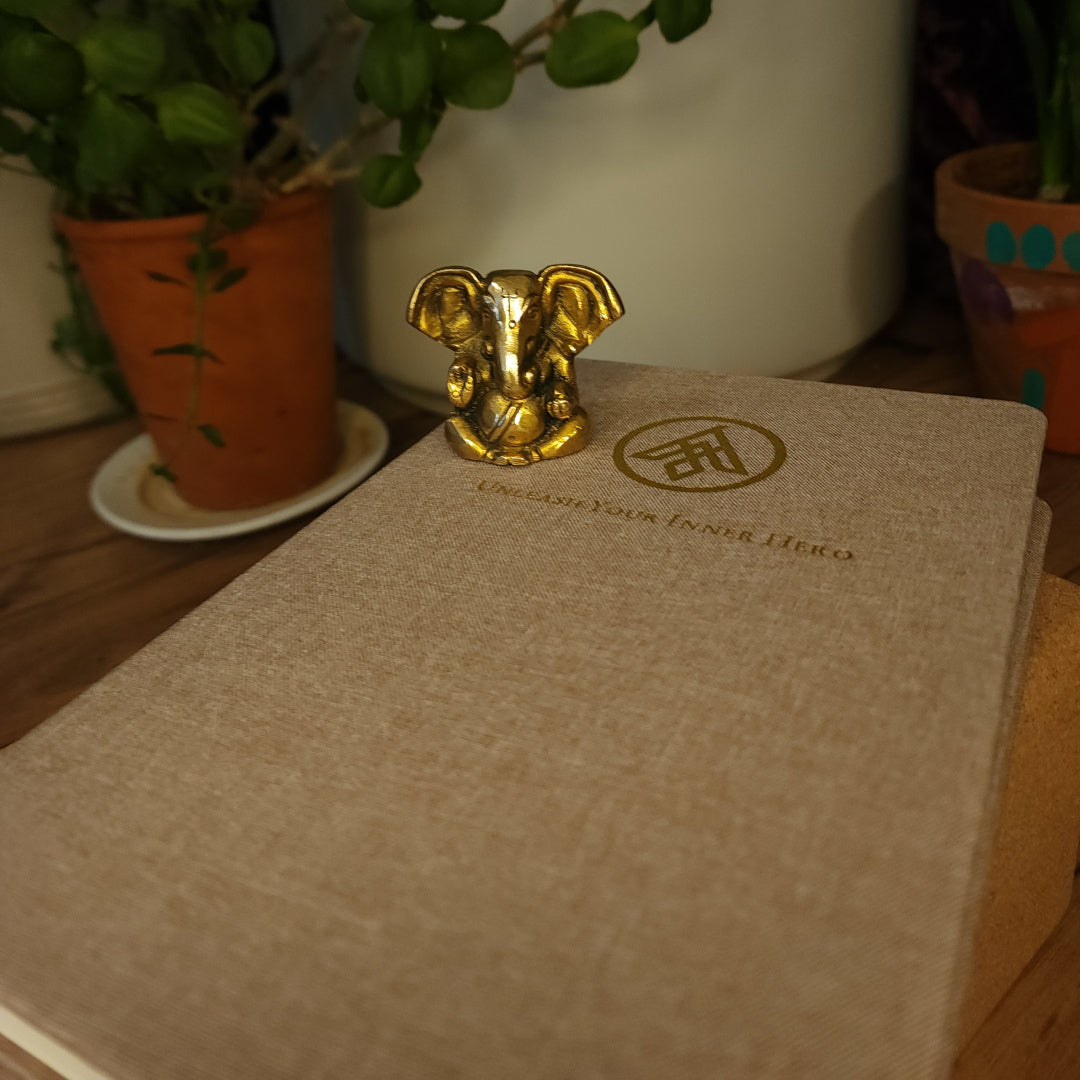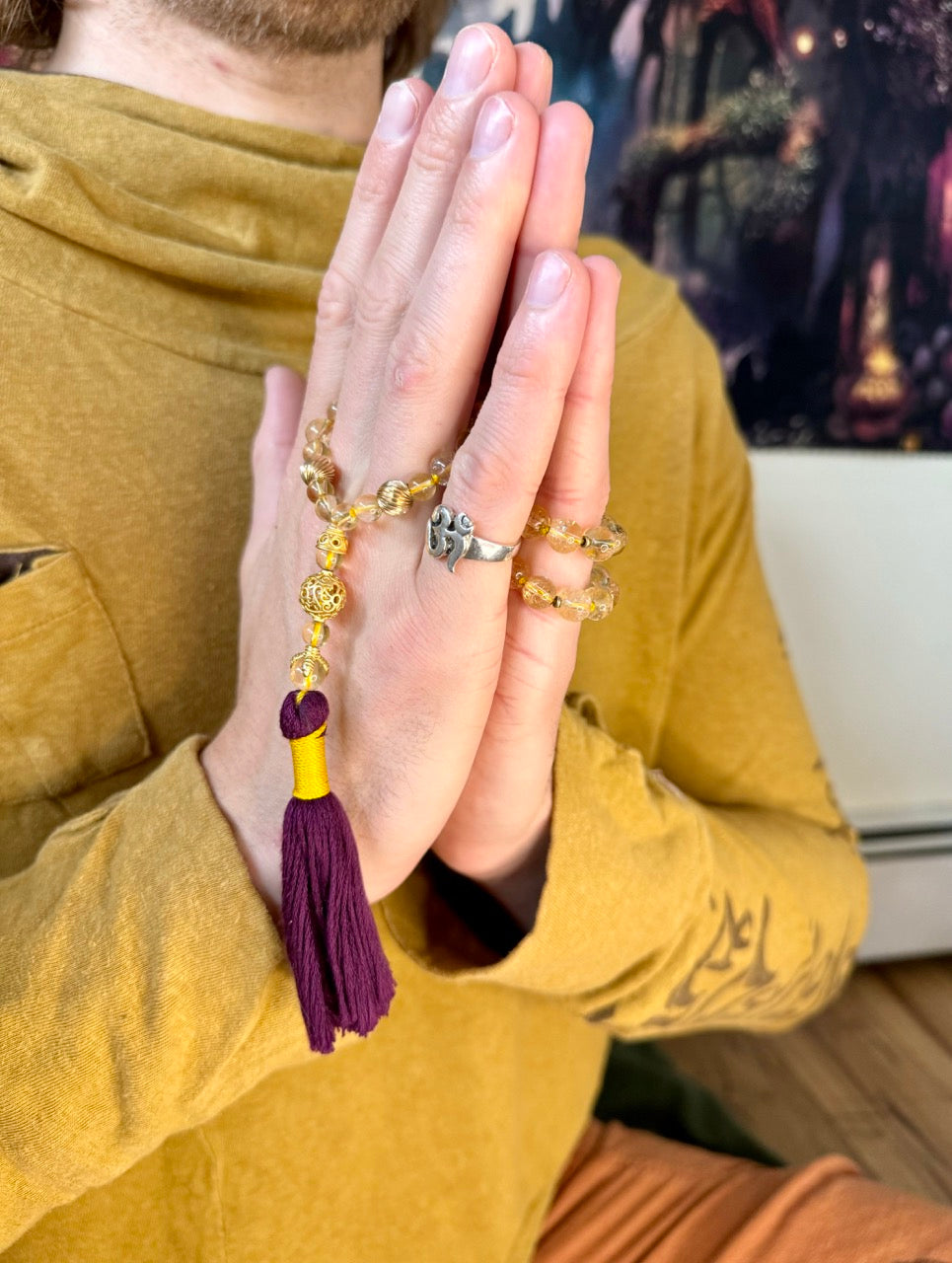
Shanmukhi Mudra (Gesture of the Six Gates)
Jack UtermoehlShare
Shanmukhi mudra, also known as the "Gesture of the Six Gates," is a symbolic and sensory withdrawal practice deeply rooted in yogic tradition.
The Sanskrit word ṣaṇmukha (षन्मुख) means “six-faced,” referring to the six sensory openings of the head: the eyes, ears, nostrils, and mouth.
It is named after the deity Murugan (also known as Skanda or Kartikeya), whose six faces represent divine qualities:
- Gnana (Wisdom)
- Vairagya (Non-attachment)
- Bala (Strength or Power)
- Kirti (Fame or Glory)
- Shakti (Creative Energy or Empowerment)
-
Tejas (Radiance or Inner Fire)
This mudra is used to internalize awareness by gently closing the sensory gates, supporting the practice of pratyahara (sense withdrawal).
It is commonly practiced before meditation or in conjunction with Bhramari Pranayama to create a deeply inward state of presence and stillness.
Sanskrit Name: Ṣaṇmukhī Mudrā – षन्मुखी मुद्रा
English Translation: Gesture of the Six Gates
Phonetic Spelling: shun-moo-khee moo-drah
In Shanmukhi mudra, the fingers gently close the six sense doors, symbolizing the retreat of the mind from the external world into the quiet cave of the heart.

Instructions to Perform Shanmukhi Mudra
Begin in a steady seated posture such as Siddhasana or Padmasana. Let the spine rise tall and the breath become smooth and silent.
Hand Position: Use your thumbs to gently press the tragus (outer flap) of each ear. Index fingers rest lightly on the eyelids. Middle fingers touch the sides of the nose, without closing the nostrils. Ring fingers rest above the upper lip. Little fingers rest below the lower lip.
Placement: Elbows remain slightly lifted, without tension. Keep the shoulders relaxed and the face soft.
Breathing Technique: Breathe slowly and quietly through the nose. Optionally combine with Bhramari (Bee Breath) for internal vibration and resonance.
Duration: Practice for 2-5 minutes to begin, gradually increasing to 10 minutes or more. Always end with a few moments of silent sitting before releasing the hands.
Benefits of Shanmukhi Mudra
Shanmukhi mudra helps calm the mind, refine the senses, and prepare you for deep meditation. By turning awareness inward, it supports a natural shift from outer world to inner world.
Physical Benefits: Reduces strain on the eyes and ears, balances the cranial nerves, and supports healthy blood flow to the brain.
Mental Benefits: Enhances concentration, reduces sensory overload, and improves the ability to focus inward without distraction.
Emotional Benefits: Soothes nervous agitation, lowers anxiety, and stabilizes emotional fluctuations.
Spiritual Benefits: Deepens pratyahara (sense withdrawal), activates the third eye (Ajna chakra), and supports meditative focus (dhyana).
Elevate Your Mudra Practice
Capture your insights and deepen your connection with our Yoga Journal.
Symbolism and Meaning of Shanmukhi Mudra
This mudra is a symbolic withdrawal into the inner cave which is the sacred temple of the heart. The act of closing the six gates mirrors the choice to turn away from external reactivity and move toward inner stillness and insight.
Murugan’s six faces are said to represent the six inner enemies and six divine qualities representing duality on the spiritual path.
In this practice, we face these energies, witness them, and allow them to dissolve in the light of awareness. The mudra becomes a portal to self-purification and reclaiming sovereignty over the senses.
When to Practice Shanmukhi Mudra
Use this mudra whenever you feel overstimulated, anxious, or disconnected from your inner voice. It is especially powerful when paired with silence and intentional breath.
- Before meditation to still the senses and mind
- With Bhramari Pranayama for internal sound and vibration
- At night to quiet the mind and prepare for sleep
- Anytime you need to retreat from overstimulation
Contraindications for Shanmukhi Mudra
- Avoid applying pressure to the eyes or nose by using only a light touch
- Those with severe ear infections, eye conditions, or nasal blockages should consult a teacher or healthcare provider before practicing
- Do not hold the breath or strain in any way; the practice should be soft and inward
Additional Insights on Shanmukhi Mudra
Affirmations: “I return to my inner sanctuary.” / “My senses serve awareness, not distraction.”
Visualization: As your senses turn inward, imagine entering an inner cave lit by a single flame. This flame represents your inner clarity. With each breath, feel yourself resting deeper into this sacred space.
Associated Chakras: Ajna (Third Eye) for insight, intuition, and internal vision.
Paired Asanas: Siddhasana, Padmasana, Vajrasana, or any stable seated pose
Related Pranayama: Bhramari (Bee Breath), Nadi Shodhana (Alternate Nostril Breath)
Meditation Techniques: Silent mantra repetition, visualization, witnessing awareness, breath-focused stillness
Variations and Modifications
Alternative Hand Positions: Practice the mudra with fewer fingers if needed (such as only thumbs and index fingers) to reduce strain. You can also use an eye mask and earplugs to simulate the experience without full finger placement.
Adaptations for Beginners: Begin with 2 minutes or a few breaths. Allow the elbows to rest on cushions if your arms fatigue.
—— 🕉 ——

Personal Insights
I was introduced to Shanmukhi mudra early on in my practice.
I had no idea what I was getting into and I felt totally ridiculous but I followed along and I found some amazing results from feeling the inner experience, which I now know as pratyahara. And the sense of comfort I gained from the mind quieting.
When I only had my inner world to pay attention to, I noticed that the outer world was a mirror of what was going on inside.
And when I paired it with bumble bee breath, I couldn't help but laugh and smile.
This created an entry point into my own personal journey.
Today, I love practicing and teaching Shanmukhi mudra as a means to turn my student's attention inward toward their self.












